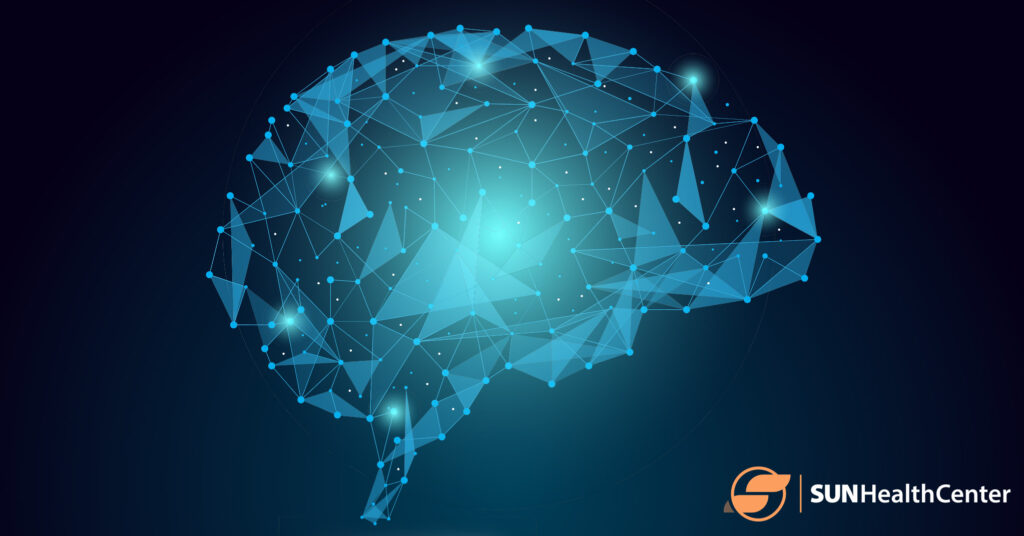
Brain mapping, or brain wave training, is a new approach to treating anxiety, depression and ADHD. The idea of neurofeedback isn’t new. It’s something that’s been around for decades. However, EEG brain mapping is a relatively new technology and one that’s revolutionizing mental health care. In this article, we’ll look at how brain mapping therapy works, what it can be used for and how people are training their brains to improve their focus, mental clarity and mood.
What Is Brain Mapping Therapy?
Brain mapping is a treatment that involves monitoring brain wave activity using a qEEG to help neurologists see what’s going on in the brain when a person is performing certain activities or thinking about certain things. This information can be used to provide feedback and help train the brain to reduce symptoms of certain mental health disorders.
The qEEG monitors for a given type of activity in the brain and provides almost instant feedback to the patient, telling them whether they’re generating the “right” type of brain activity. The patient can then adjust their thoughts in response until they learn how to control their thought patterns.
For example, beta waves are associated with focus, attention and alertness, while alpha waves are associated with peacefulness and relaxation. Someone who’s trying brain wave training to help themselves manage ADHD would be aiming to generate more beta waves, while someone struggling with anxiety would want to train themselves to generate more alpha waves.
The idea behind brain mapping therapy is that people can train their brains similarly to training their muscles. By repeatedly and consistently practicing generating a given brain wave in a treatment session, they can learn how to do the same thing at home or at work.
It can take multiple sessions over the course of several months to see results from brain mapping therapy, and it’s unclear how long the results will last if someone stops the therapy sessions. However, with consistent treatments, many people report an improvement in their symptoms thanks to brain mapping therapy.
Benefits of Brain Mapping
Brain mapping helps teach the brain to function more effectively by giving instant feedback on the types of brain waves being generated. This can help manage the symptoms of many conditions, including:
- Anxiety
- ADHD
- Depression
- PTSD
By learning how to generate the right types of brain waves, a person could improve their memory, attention, sleep quality and mood. Brain wave training can offer an improvement in these areas without the person needing to take prescription medications. This makes brain wave therapies a good option for people who have unwanted side effects from medication or for whom medications are contraindicated.
Brain mapping can be helpful for individuals with relatively mild symptoms. Many people who seek out this form of treatment do so in the hopes of improving their performance at work or college rather than treating debilitating symptoms.
A Simplified Approach to Brain Wave Training
Brain wave training lets people see what’s going on in their minds in a way other forms of therapy don’t. It’s possible to go through the motions with meditation, but with brain wave training, a computer monitor is showing what your brain is doing at all times. You’re hooked up to sensors that will highlight if you’re anxious or stressed or your mind is wandering, so you’ve got the feedback you need to help you focus on the right kind of emotion.
Over the years, EEG technology has gathered some interesting information about how different emotions and brain wave patterns can impact our learning, performance and well-being. For example, feelings of anxiety can impair learning more than you might expect. A person who’s struggling with memory or focus might think their mind is simply wandering but discover through brain wave training that they’re able to focus better if they try to relax than if they spend energy on trying to concentrate.
During a brain mapping therapy session, you’ll spend between 30 minutes and 1 hour hooked up to an EEG having your brain waves monitored. A clinician will examine those brain wave charts and look for any areas that might require treatment. The brain of someone who has depression or ADHD often shows very different patterns than a neurotypical brain does, and with training, a person can alter the patterns their brain generates.
Think of brain wave training as similar to a session at the gym. Your goal is to practice generating a specific type of brain wave. It can be difficult to do at first but gets easier with practice. Over time, you may be able to learn how to recognize certain thoughts or feelings when you’re outside the treatment center and perform the same exercises as you do in therapy to control those negative feelings.
Brain Mapping Therapy Could Boost Your Mental Well-being
Brain mapping therapy is a powerful treatment option for a variety of mental health challenges. It’s also useful for people who are looking to optimize their brain function. From athletes hoping to combat anxiety to executives looking to improve their focus and memory, people from all walks of life could potentially benefit from training their brains.
If you’re struggling with PTSD, anxiety, depression or ADHD, brain wave training could reduce the severity of your symptoms. It can be used alone or alongside other forms of therapy or medication. The treatment requires patience and regular practice but has the potential to greatly improve your quality of life.
At Sun Health Center, we understand that coping with mental health challenges isn’t easy. We offer a variety of different therapies to help people address the challenges they face. From neurofeedback and brain mapping to telehealth services, our goal is to provide a variety of accessible, effective therapies. To learn more about our treatment options or book a consultation, contact us today. Let us help you on the path to a better life.
